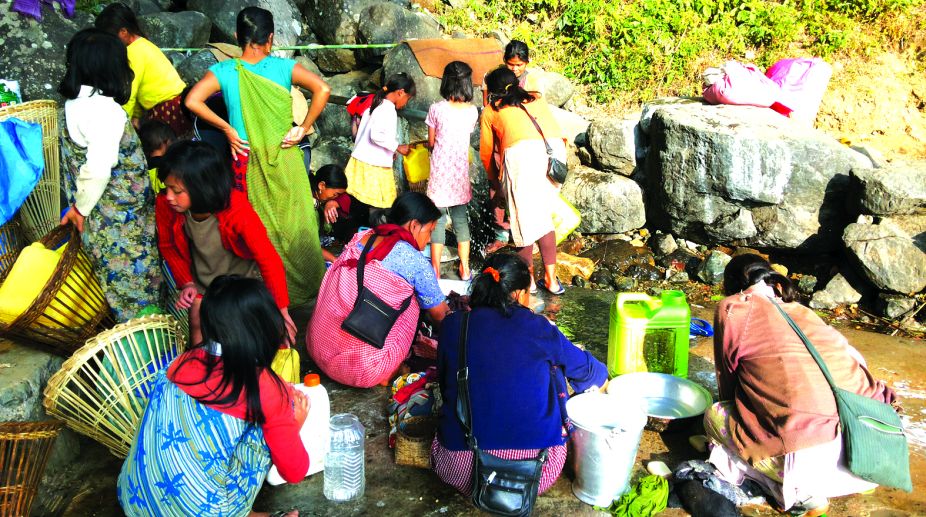Going dry
Cherrapunjee, once the rainiest place on earth, is going dry. Renamed Sohra, it has long been part of the collective memory of generations who first encountered the name in school textbooks as “the rainiest place on earth”. Receiving about 450 inches of rainfall in a year — despite the dry months in winter — Sohra now takes turns in sharing the distinction with neighbouring Mawsynram in the East Khasi Hills, says a report in the Dimapur-based Nagaland Page.
Advertisement
The British abandoned the idea of making Sohra the capital of the North-east in 1864 after months of incessant rain dampened the colonisers’s spirits, “When the British were here, people wouldn’t see the sun for three months at a stretch,” says former Sohra legislator Titos Chyne. In 1861, Sohra got 1,042 inches of rainfall.
More than a century later, tourists keep arriving in droves just to witness the biblical proportions of rainfall. For the people of Sohra, however, all of this amounts to nothing. “What do we do with a record if we don’t get drinking water?” asks 29-year-old Balbinia Lyngdoh, a resident of Sohra. Water is supplied only for an hour a day. “That’s during the rainy season. In winter, we can’t even count on that,” she adds.
Sohra is at an elevation of 1,484 m atop a plateau overlooking Bangladesh. Its topography is responsible both for its record-breaking spells of rain and is also one of the reasons why water supply is such a challenge there.
Still a few left
“Our children roamed around till almost dawn on the first night when the entire village was electrified, some standing below the electric post and enthusiastically staring at the bulb”, quipped Jangkholen Haokip, an inhabitant of Leisang village in Manipur’s Kangpokpi , the last to be electrified in the country, says a report in the Imphal Free Press. Prime Minister Narendra Modi, on 28 April declared that the country became fully electrified with Leisang being the last village to come under the ambit.
While villagers are happy, the Hmar Students’ Association has raised their eyebrows on the claim made by the PM. It called that as a matter of fact, there are 50 villages in the Pherzawl district of Manipur, which are yet to be electrified and in addition to that, there are more than 50 villages in the Dima Hasao district, and more than 30 villages in the Barak valley area of Cachar district of Assam, which are yet to be electrified.
The HSA challenged that it can say with utmost confidence about the non-electrification of those villages, as the above-mentioned areas are Hmar tribe-dominated.
Unsuccessful scheme
The All Arunachal Pradesh Students’ Union claimed that the government-initiated smart classroom programme is the most unsuccessful scheme ever, says a report in the Itanagar-based Arunachal Times. In a press note, the union said the programme was useless without proper electricity and wifi facility and suggested that the sanctioned fund of Rs 35 crore instead be used for maintenance of schools.
The Aapsu made note of this and various other issues faced by government schools across the capital complex, Lohit, Namsai, Tezu and West Siang districts during a week’s educational tour. The union said it found that many schools were functioning under miserable conditions and struggling with poor facilities.











